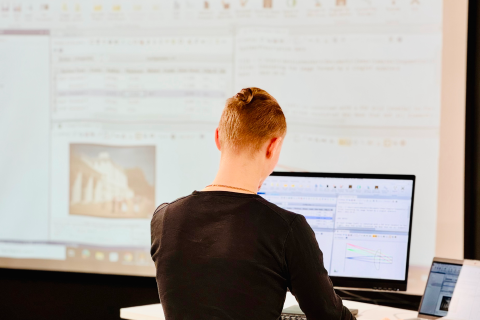




Ansys Zemax OpticStudio: Fundamentals, Freeforms and Aspheres

- Date:
- 18.3.2025 - 19.3.2025
- Credits:
- 1 ECTS credits
- Location:
- Tampere
- Continuous learning category:
- Technology and digitalization
- Teaching format:
- Contact teaching
- Price:
- 1680 € (VAT 0%)

Registration has closed. If you would be interested in attending a training like this in the future, write to [email protected].
Compared to traditional spherical lenses, freeforms and aspherical lenses enable the creation of more compact and lightweight optical systems while achieving high performance, making them suitable for advanced applications in various fields such as augmented reality, aerospace, and medical imaging.
In this training, we will go through how freeform and aspherical lenses are designed, optimized, and toleranced by using Ansys Zemax OpticStudio. The training will start from OpticStudio fundamentals, including setting up the sequential environment and creating a basic lens. We will also go through optical aberration theory.
During the training we will mostly use the sequential mode of OpticStudio. If the time allows and the participants wish, we will go through conversion from sequential to non-sequential mode and look at some design tips in this mode.
The training is taught in English.
You will receive 1 ECTS credit (opintopiste) and a Open Badge digital certificate from the University of Eastern Finland.
Technical requirements:
An OpticStudio license will be given to the training participants for the duration of the training, but you will need your own laptop.
To everybody interested in gaining hands-on experience on Ansys Zemax OpticStudio, one of the most established optics design software on the market. The course is well suited both for beginners and more experienced OpticStudio users.
We accept a maximum of 10 participants to ensure the quality of one-to-one training. Late registrations will be accepted even after 3.3.2025 if there is room.
Where:
On-site course at EDRMedeso Tampere office;
Eteläpuisto 2C, 33200 Tampere, Finland
When:
18–19 March 2025
No necessary prerequisites, however, the following short courses will allow you to get familiar with OpticStudio software: https://innovationspace.ansys.com/product/getting-started-with-ansys-zemax-opticstudio/
The VAT-free price is 1680€, and with VAT 25.5% the price increases by 428.57€ to 2108,57€. Lunch, coffee/tea and the use of the software during the course are included in the price.
The more detailed contents are as follows:
1. Introduction to Zemax
- Interface & Materials: Overview of the Zemax interface, setting glass properties, and utilizing the materials catalog.
- Optics Review: Basics of first and third-order optics, understanding aberrations, and using analysis tools.
- Optimization: Use of the Merit Function Editor and operands for optimization, including sampling methods. Includes hands-on exercises with various lens designs (singlet, doublet, Cooke triplet).
- Tolerancing: Learning tolerance operands, compensators, settings, and handling irregularities in tolerancing. Focuses on desensitization techniques and methods to speed up tolerancing, with a practical exercise on singlet lenses.
2. Aspheres and Freeforms
- Introduction to Aspheres & Freeforms: Discussion of aspheric and freeform surfaces in OpticStudio, including various surface types (even asphere, extended asphere, Q type, true freeform). Exercises involve comparing different asphere types and using tools for aspheric surface conversion, testing, and metrology.
- Tolerancing & Optimization: Explanation of how to use design tools for manufacturability, applying optimization techniques, and setting tolerances. Involves using production tools in OpticStudio, analyzing examples like the Chebyshev polynomial surface for a TMA (Three-Mirror Anastigmat).
- Freeform Surface Optimization: Focuses on using TrueFreeForm surfaces and off-axis conic freeforms in optical design. An exercise includes optimizing a freeform imaging prism using an extended polynomial freeform surface.
Instructor

Sophia Fox
Optoelectronics Engineer
EDRMedeso (UK)
Sophia received her PhD 2017 after which she worked with optics modelling and design in companies such as Facebook. She has been working as an optical engineer and design scientist until one year ago when she joined EDRMedeso. One of her many competences include optical modelling tool, Ansys Zemax OpticStudio, and teaching that to other optical engineers.


